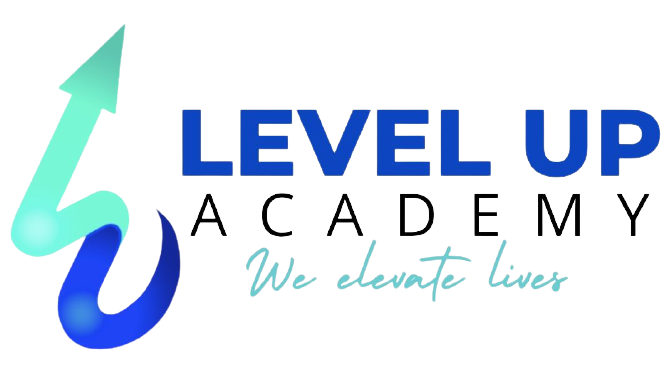See Which Online Learning Formats Work Best for You!
 Technology photo created by freepik
Technology photo created by freepik
See Which Online Learning Formats Work Best for You!
by Mike Ramirez
The internet’s global reach makes easier and more accessible so many different things, including education.
Options in the past were largely limited to traditional classrooms, print and mass media, but today students can access and learn so much info quite literally at their fingertips, from the comforts of their home or anywhere with a fast, solid wifi connection and sufficient equipment. Educators, too, can now reach out and share their knowledge and material with anyone connected, practically anywhere in the world and at any time.
It’s only natural that e-learning has grown to become a booming new reality and industry, and now comes in different formats and types, developed to cater to various learning styles.
Below are some of the different available online learning methods and formats you can use. See which methods work best for your learning needs! If you’re an educator, you’ll also need to know which methods you are most comfortable and efficient using, and consider how your students or audience will respond to the e-learning formats you choose. It will also be helpful for educators to get acquainted with multiple formats to stay flexible and adapt their teaching programs to specific circumstances and to avoid the weaknesses of individual methods.
Different sources have varying ways of classifying all the different online learning formats available today, but they generally fall into one of the following categories:
1. Synchronous Online Learning
”Synchronous” just means “live” or “real-time”; in other words, learning programs are meant to be received at the same time they are delivered or within a specific timeline, at least initially.
These methods are roughly the equivalent of traditional classroom learning and live broadcasts, and include video conferencing, webinars, virtual classrooms, live-streamed audio and video, and even live chats. Students can communicate and discuss live and directly with their teachers and generally expect to be answered during the session.
The primary downside, of course, is the assumption that learners have access to a fast, reliable internet connection, enough to stream high-resolution video in real-time; another is its rigidity. Like conventional classrooms, it is a challenge to ask and discuss outside the period of actual lessons, but it is also easy enough to leave lecture materials online for later study.
2. Asynchronous Online Learning
The opposite of “synchronous”, “asynchronous” logically means “not live”: in this case, you can learn at your own pace, or at the very least you’re not expected to deliver or receive educational material within a strict schedule.
Default self-study tends to take this form since a lot of learning materials, especially informal ones like online videos, blog articles, or podcasts, are placed online without any expectation that they are read, watched, or listened to by a specific deadline.
Studying this way, however, implies that learners will be able to summon sufficient self-motivation, as well as an ability to organize and decide what material they want to study, how much of it, and in a timeframe of their own making.
3. Hybrid or Blended E-learning Methods
A lot of e-learning programs fall somewhere in between strictly synchronous and strictly asynchronous. Even many webinars that are originally live are kept online for the later consumption of people who were unable to attend initially and ask questions of the hosts; videos streamed live on Facebook or YouTube are some examples.
Many learning packages also combine synchronous material such as scheduled classes and webinars, with asynchronous material, such as documents and recorded videos left up for later consumption.

Technology photo created by freepik
E-learning methods are also classifiable by the specific media formats they come in, and internet capabilities have evolved over the last few decades to accommodate many different formats. These are a few, but by no means all, examples:
Different E-Learning Methods
Live-streaming Videos
These are typically organized by a small, set number of hosts, but are streamed live on platforms such as Facebook Live, Discord, or Twitch so that watchers can also comment and ask questions live.
Videoconferencing & Webinars
These are slightly different from live-stream videos in that the intent here is to include all of a set number of attendees; these can be between as low as 4 and as many as 30 or more. Typical platforms for this include Zoom, Skype, Facebook Live, and Discord.
Pre-recorded Videos
Created and uploaded by one user channel at a time (an individual, organization, or group), posted and kept online indefinitely for potentially unlimited reach. Possibly the biggest and best-known video platform is YouTube, but other common sites include Vimeo and Dailymotion. Streaming sites like Netflix, Hulu, or Disney+ are similar except for requiring to pay for subscriptions.
Online Text Documents
Generally posted or shared online via cloud drives, can either be directly editable (as in Google Docs and uploaded Word documents) or fixed (uploaded PDFs).
Blog Articles
Written directly onto blog sites or other websites that allow text and often also image posting, on a regular schedule or depending on the author’s availability.
Online Graphics and Photos
These can be easily uploaded to blogs, social media, and general websites, and can be presented singly or serially in the form of slideshows.
Games and Apps
There is a staggering variety of online games and apps available today, and they all carry the potential for educating users. Some games work in real-time, like MMORPGs.
Chat services and direct messaging
Nowadays most live streaming programs, social media, and similar sites generally come with direct-message and audio-only chat options, which are useful for discussions and asking and answering questions.
Online tutoring
Services for tutoring online tend to be run live, requiring the tutor to communicate with the student via video chat, although this can be paired with online activities to be done and submitted later on. Normally sessions are conducted one-on-one, or at most with a small handful.
Course websites
These tend to be specifically made for serious online learning, so they generally will have some combination of options for scheduling, uploading, and saving documents.
Chances are, you’re probably already familiar with some of these even outside of a formal learning environment, so it won’t be a big jump using these methods to actually teach or learn online. Just get yourself into the mindset that e-learning is hugely useful and awesome, and you’ll be ready to embrace it fully in no time!
Ready to learn? Book an online learning service with Level Up Academy! We care about your learning goals and value your preferred learning style. Reach out to us now; your first 30 minutes is on us!
Sources:
- https://e-student.org/types-of-e-learning/
- https://www.idtech.com/blog/types-of-elearning
- https://www.techsmith.com/blog/distance-learning/
- https://blog.wiziq.com/online-learning-methods-for-virtual-classroom/
Check out other Level Up Articles here!
5 Tips On How to Teach Young Students Effectively
How To Maximize Your Tutoring Sessions

5-Step Guide: How To Be Online Learning Ready

How To Use Online Learning To Suit Different Learning Styles

